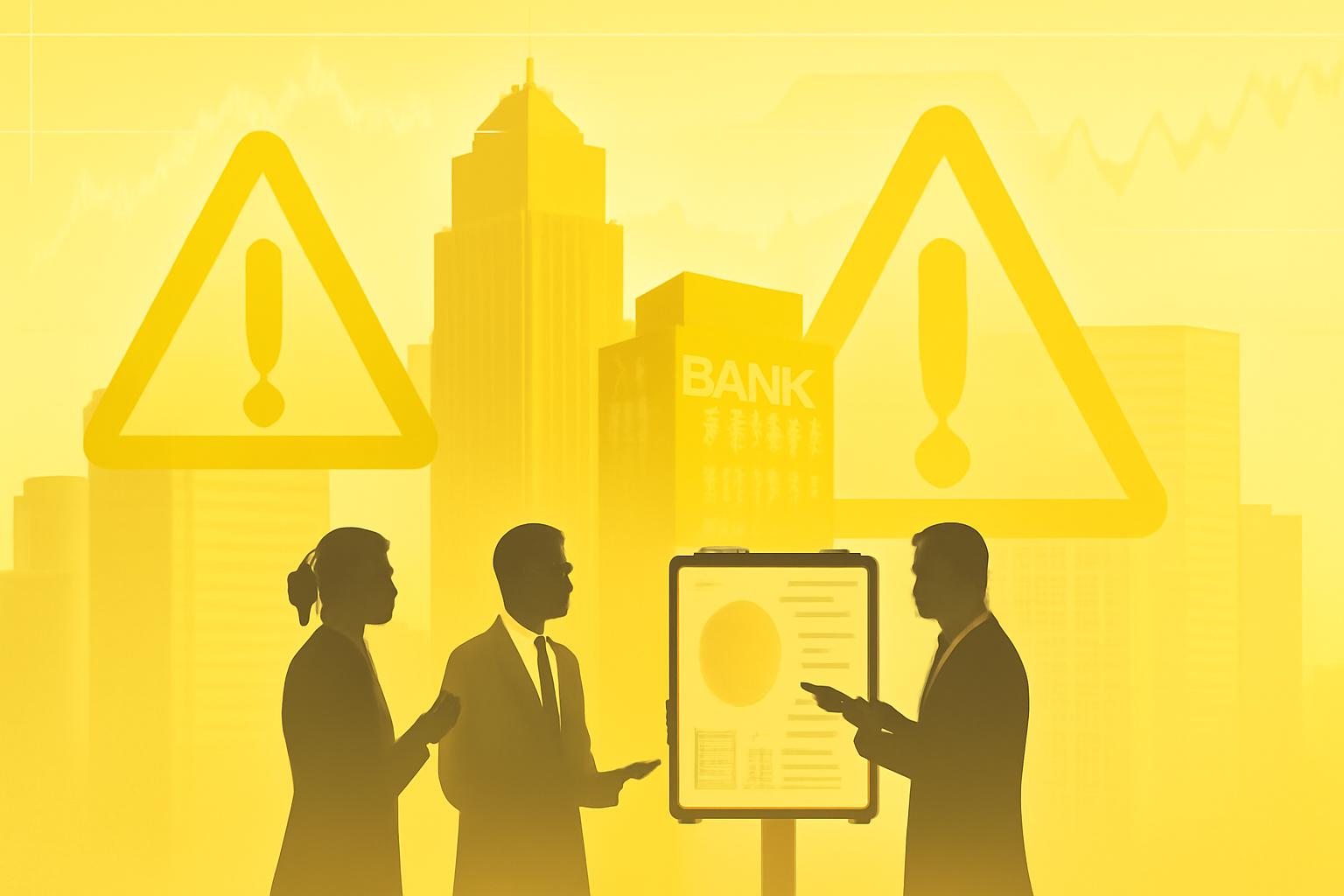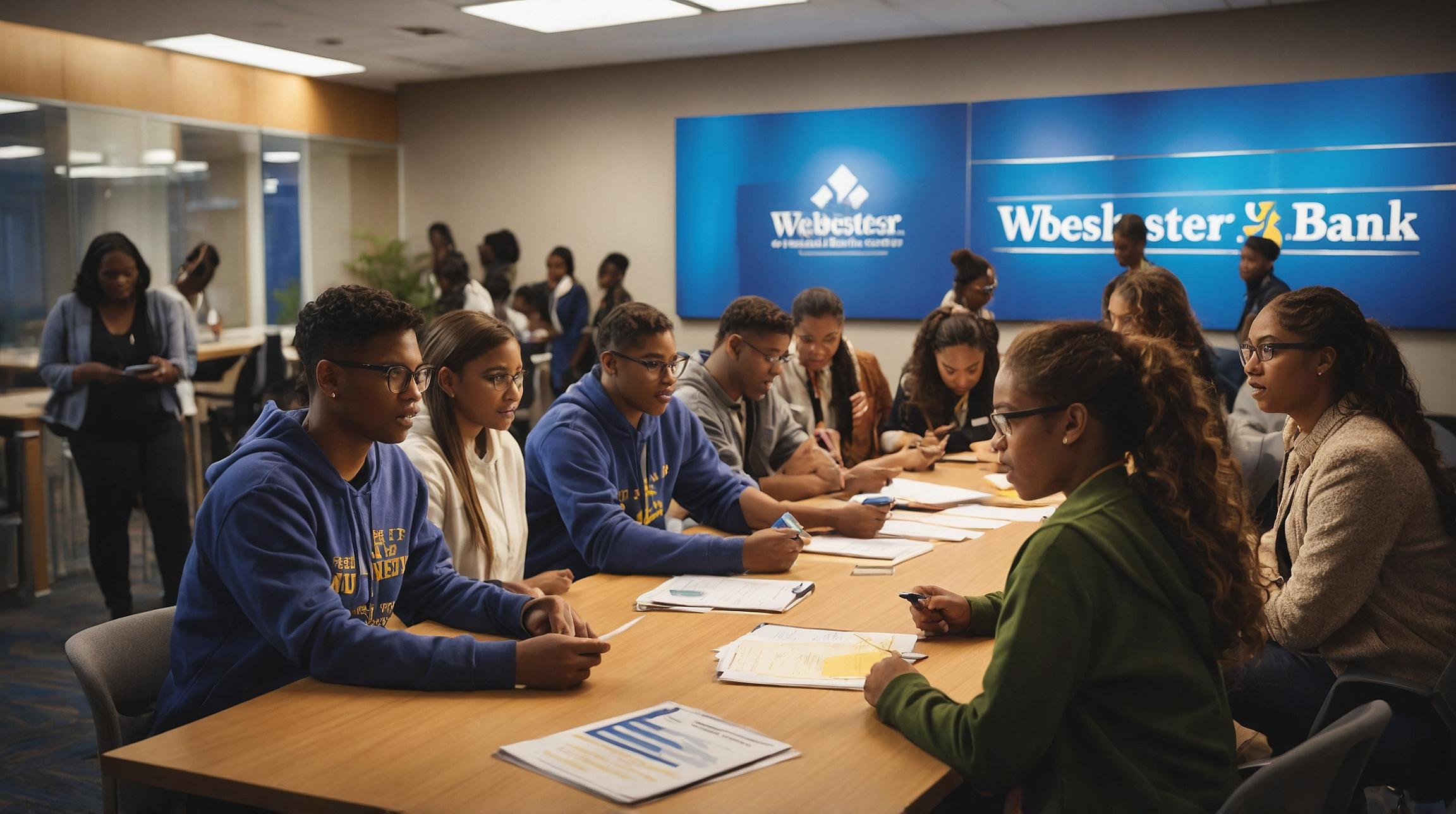Moody’s analysis underscores a fundamentally sound U.S. banking system and private credit market despite recent headline concerns over bad loans. Key credit metrics remain stable, and economic resilience bolsters confidence in credit quality. !-- wp:paragraph -->
Contents
FinOracleAI — Market ViewSigns of Market Sentiment ImprovementFinOracleAI — Market ViewSigns of Market Sentiment ImprovementFinOracleAI — Market ViewEconomic Indicators Point to ResilienceSigns of Market Sentiment ImprovementFinOracleAI — Market ViewLow Default Rates Support StabilityEconomic Indicators Point to ResilienceSigns of Market Sentiment ImprovementFinOracleAI — Market ViewLow Default Rates Support StabilityEconomic Indicators Point to ResilienceSigns of Market Sentiment ImprovementFinOracleAI — Market ViewLow Default Rates Support StabilityEconomic Indicators Point to ResilienceSigns of Market Sentiment ImprovementFinOracleAI — Market ViewMarket Sell-Offs Triggered by Specific Loan ExposuresLow Default Rates Support StabilityEconomic Indicators Point to ResilienceSigns of Market Sentiment ImprovementFinOracleAI — Market ViewNo Signs of a Credit Cycle TurnMarket Sell-Offs Triggered by Specific Loan ExposuresLow Default Rates Support StabilityEconomic Indicators Point to ResilienceSigns of Market Sentiment ImprovementFinOracleAI — Market ViewNo Signs of a Credit Cycle TurnMarket Sell-Offs Triggered by Specific Loan ExposuresLow Default Rates Support StabilityEconomic Indicators Point to ResilienceSigns of Market Sentiment ImprovementFinOracleAI — Market ViewMoody’s Affirms Banking Sector and Private Credit Market StabilityNo Signs of a Credit Cycle TurnMarket Sell-Offs Triggered by Specific Loan ExposuresLow Default Rates Support StabilityEconomic Indicators Point to ResilienceSigns of Market Sentiment ImprovementFinOracleAI — Market View
- Opportunities: Potential for credit quality improvement with expected GDP growth and declining interest rates.
- Risks: Continued vigilance required for possible shifts in lending standards and unforeseen credit cycle changes.
- Market dynamics: Temporary volatility driven by isolated loan exposures, not systemic distress.
- Economic outlook: Stronger-than-anticipated U.S. economy supports stable credit conditions.
FinOracleAI — Market View
Moody’s analysis underscores a fundamentally sound U.S. banking system and private credit market despite recent headline concerns over bad loans. Key credit metrics remain stable, and economic resilience bolsters confidence in credit quality. !-- wp:paragraph -->- Opportunities: Potential for credit quality improvement with expected GDP growth and declining interest rates.
- Risks: Continued vigilance required for possible shifts in lending standards and unforeseen credit cycle changes.
- Market dynamics: Temporary volatility driven by isolated loan exposures, not systemic distress.
- Economic outlook: Stronger-than-anticipated U.S. economy supports stable credit conditions.
“With respect to GDP growth, we’re doing much better than many people thought just six months ago,” Pinto said. “So again, the credit conditions, looking at GDP growth as well as an expected decline in interest rates, we feel the credit quality is in a pretty good place today and potentially may improve.”Signs of Market Sentiment Improvement
Following Thursday’s sell-off, market sentiment showed signs of recovery Friday. The SPDR S&P Regional Banking ETF, which tracks mid-market banks, rebounded 2% in premarket trading after falling 6.2% the previous day. !-- wp:paragraph -->FinOracleAI — Market View
Moody’s analysis underscores a fundamentally sound U.S. banking system and private credit market despite recent headline concerns over bad loans. Key credit metrics remain stable, and economic resilience bolsters confidence in credit quality. !-- wp:paragraph -->- Opportunities: Potential for credit quality improvement with expected GDP growth and declining interest rates.
- Risks: Continued vigilance required for possible shifts in lending standards and unforeseen credit cycle changes.
- Market dynamics: Temporary volatility driven by isolated loan exposures, not systemic distress.
- Economic outlook: Stronger-than-anticipated U.S. economy supports stable credit conditions.
“With respect to GDP growth, we’re doing much better than many people thought just six months ago,” Pinto said. “So again, the credit conditions, looking at GDP growth as well as an expected decline in interest rates, we feel the credit quality is in a pretty good place today and potentially may improve.”Signs of Market Sentiment Improvement
Following Thursday’s sell-off, market sentiment showed signs of recovery Friday. The SPDR S&P Regional Banking ETF, which tracks mid-market banks, rebounded 2% in premarket trading after falling 6.2% the previous day. !-- wp:paragraph -->FinOracleAI — Market View
Moody’s analysis underscores a fundamentally sound U.S. banking system and private credit market despite recent headline concerns over bad loans. Key credit metrics remain stable, and economic resilience bolsters confidence in credit quality. !-- wp:paragraph -->- Opportunities: Potential for credit quality improvement with expected GDP growth and declining interest rates.
- Risks: Continued vigilance required for possible shifts in lending standards and unforeseen credit cycle changes.
- Market dynamics: Temporary volatility driven by isolated loan exposures, not systemic distress.
- Economic outlook: Stronger-than-anticipated U.S. economy supports stable credit conditions.
Economic Indicators Point to Resilience
Pinto also emphasized the greater-than-expected strength of the U.S. economy. Despite concerns over labor market softness and tariff impacts, the economy continues to demonstrate resilience. !-- wp:paragraph --> At a recent banking conference with approximately 2,000 participants, Pinto noted a prevailing sentiment of resilience among industry professionals. !-- wp:paragraph -->“With respect to GDP growth, we’re doing much better than many people thought just six months ago,” Pinto said. “So again, the credit conditions, looking at GDP growth as well as an expected decline in interest rates, we feel the credit quality is in a pretty good place today and potentially may improve.”Signs of Market Sentiment Improvement
Following Thursday’s sell-off, market sentiment showed signs of recovery Friday. The SPDR S&P Regional Banking ETF, which tracks mid-market banks, rebounded 2% in premarket trading after falling 6.2% the previous day. !-- wp:paragraph -->FinOracleAI — Market View
Moody’s analysis underscores a fundamentally sound U.S. banking system and private credit market despite recent headline concerns over bad loans. Key credit metrics remain stable, and economic resilience bolsters confidence in credit quality. !-- wp:paragraph -->- Opportunities: Potential for credit quality improvement with expected GDP growth and declining interest rates.
- Risks: Continued vigilance required for possible shifts in lending standards and unforeseen credit cycle changes.
- Market dynamics: Temporary volatility driven by isolated loan exposures, not systemic distress.
- Economic outlook: Stronger-than-anticipated U.S. economy supports stable credit conditions.
“One cockroach does not a trend make,” he remarked.Low Default Rates Support Stability
Data on high-yield debt defaults this year remain relatively low, holding under 5%. Moody’s projects these rates will decline further to below 3% in 2026. This contrasts starkly with the 2008 financial crisis when defaults surged into the low double digits. !-- wp:paragraph -->Economic Indicators Point to Resilience
Pinto also emphasized the greater-than-expected strength of the U.S. economy. Despite concerns over labor market softness and tariff impacts, the economy continues to demonstrate resilience. !-- wp:paragraph --> At a recent banking conference with approximately 2,000 participants, Pinto noted a prevailing sentiment of resilience among industry professionals. !-- wp:paragraph -->“With respect to GDP growth, we’re doing much better than many people thought just six months ago,” Pinto said. “So again, the credit conditions, looking at GDP growth as well as an expected decline in interest rates, we feel the credit quality is in a pretty good place today and potentially may improve.”Signs of Market Sentiment Improvement
Following Thursday’s sell-off, market sentiment showed signs of recovery Friday. The SPDR S&P Regional Banking ETF, which tracks mid-market banks, rebounded 2% in premarket trading after falling 6.2% the previous day. !-- wp:paragraph -->FinOracleAI — Market View
Moody’s analysis underscores a fundamentally sound U.S. banking system and private credit market despite recent headline concerns over bad loans. Key credit metrics remain stable, and economic resilience bolsters confidence in credit quality. !-- wp:paragraph -->- Opportunities: Potential for credit quality improvement with expected GDP growth and declining interest rates.
- Risks: Continued vigilance required for possible shifts in lending standards and unforeseen credit cycle changes.
- Market dynamics: Temporary volatility driven by isolated loan exposures, not systemic distress.
- Economic outlook: Stronger-than-anticipated U.S. economy supports stable credit conditions.
“One cockroach does not a trend make,” he remarked.Low Default Rates Support Stability
Data on high-yield debt defaults this year remain relatively low, holding under 5%. Moody’s projects these rates will decline further to below 3% in 2026. This contrasts starkly with the 2008 financial crisis when defaults surged into the low double digits. !-- wp:paragraph -->Economic Indicators Point to Resilience
Pinto also emphasized the greater-than-expected strength of the U.S. economy. Despite concerns over labor market softness and tariff impacts, the economy continues to demonstrate resilience. !-- wp:paragraph --> At a recent banking conference with approximately 2,000 participants, Pinto noted a prevailing sentiment of resilience among industry professionals. !-- wp:paragraph -->“With respect to GDP growth, we’re doing much better than many people thought just six months ago,” Pinto said. “So again, the credit conditions, looking at GDP growth as well as an expected decline in interest rates, we feel the credit quality is in a pretty good place today and potentially may improve.”Signs of Market Sentiment Improvement
Following Thursday’s sell-off, market sentiment showed signs of recovery Friday. The SPDR S&P Regional Banking ETF, which tracks mid-market banks, rebounded 2% in premarket trading after falling 6.2% the previous day. !-- wp:paragraph -->FinOracleAI — Market View
Moody’s analysis underscores a fundamentally sound U.S. banking system and private credit market despite recent headline concerns over bad loans. Key credit metrics remain stable, and economic resilience bolsters confidence in credit quality. !-- wp:paragraph -->- Opportunities: Potential for credit quality improvement with expected GDP growth and declining interest rates.
- Risks: Continued vigilance required for possible shifts in lending standards and unforeseen credit cycle changes.
- Market dynamics: Temporary volatility driven by isolated loan exposures, not systemic distress.
- Economic outlook: Stronger-than-anticipated U.S. economy supports stable credit conditions.
“One cockroach does not a trend make,” he remarked.Low Default Rates Support Stability
Data on high-yield debt defaults this year remain relatively low, holding under 5%. Moody’s projects these rates will decline further to below 3% in 2026. This contrasts starkly with the 2008 financial crisis when defaults surged into the low double digits. !-- wp:paragraph -->Economic Indicators Point to Resilience
Pinto also emphasized the greater-than-expected strength of the U.S. economy. Despite concerns over labor market softness and tariff impacts, the economy continues to demonstrate resilience. !-- wp:paragraph --> At a recent banking conference with approximately 2,000 participants, Pinto noted a prevailing sentiment of resilience among industry professionals. !-- wp:paragraph -->“With respect to GDP growth, we’re doing much better than many people thought just six months ago,” Pinto said. “So again, the credit conditions, looking at GDP growth as well as an expected decline in interest rates, we feel the credit quality is in a pretty good place today and potentially may improve.”Signs of Market Sentiment Improvement
Following Thursday’s sell-off, market sentiment showed signs of recovery Friday. The SPDR S&P Regional Banking ETF, which tracks mid-market banks, rebounded 2% in premarket trading after falling 6.2% the previous day. !-- wp:paragraph -->FinOracleAI — Market View
Moody’s analysis underscores a fundamentally sound U.S. banking system and private credit market despite recent headline concerns over bad loans. Key credit metrics remain stable, and economic resilience bolsters confidence in credit quality. !-- wp:paragraph -->- Opportunities: Potential for credit quality improvement with expected GDP growth and declining interest rates.
- Risks: Continued vigilance required for possible shifts in lending standards and unforeseen credit cycle changes.
- Market dynamics: Temporary volatility driven by isolated loan exposures, not systemic distress.
- Economic outlook: Stronger-than-anticipated U.S. economy supports stable credit conditions.
“When we dig deeper here and look to see if there’s a turn in the credit cycle, which is effectively what the market seems to be focusing on, we can find no evidence,” Pinto said. “Now that’s what we’re seeing today. That could always change. But if we look at the asset quality numbers that we’ve seen over the last several quarters, we’re seeing very little deterioration at all.”Market Sell-Offs Triggered by Specific Loan Exposures
Bank stocks experienced sharp declines following disclosures from Zions Bancorp and Western Alliance Bancorp regarding bad loans connected to bankrupt auto lenders. Jefferies also faced pressure after revealing exposure to the bankrupt auto parts company First Brands. !-- wp:paragraph --> These revelations fueled sector-wide losses as investors feared broader risks. JPMorgan Chase CEO Jamie Dimon notably commented, “when you see one cockroach, there are probably more,” intensifying market anxiety. !-- wp:paragraph --> However, Pinto cautioned against extrapolating a trend from isolated incidents. !-- wp:paragraph -->“One cockroach does not a trend make,” he remarked.Low Default Rates Support Stability
Data on high-yield debt defaults this year remain relatively low, holding under 5%. Moody’s projects these rates will decline further to below 3% in 2026. This contrasts starkly with the 2008 financial crisis when defaults surged into the low double digits. !-- wp:paragraph -->Economic Indicators Point to Resilience
Pinto also emphasized the greater-than-expected strength of the U.S. economy. Despite concerns over labor market softness and tariff impacts, the economy continues to demonstrate resilience. !-- wp:paragraph --> At a recent banking conference with approximately 2,000 participants, Pinto noted a prevailing sentiment of resilience among industry professionals. !-- wp:paragraph -->“With respect to GDP growth, we’re doing much better than many people thought just six months ago,” Pinto said. “So again, the credit conditions, looking at GDP growth as well as an expected decline in interest rates, we feel the credit quality is in a pretty good place today and potentially may improve.”Signs of Market Sentiment Improvement
Following Thursday’s sell-off, market sentiment showed signs of recovery Friday. The SPDR S&P Regional Banking ETF, which tracks mid-market banks, rebounded 2% in premarket trading after falling 6.2% the previous day. !-- wp:paragraph -->FinOracleAI — Market View
Moody’s analysis underscores a fundamentally sound U.S. banking system and private credit market despite recent headline concerns over bad loans. Key credit metrics remain stable, and economic resilience bolsters confidence in credit quality. !-- wp:paragraph -->- Opportunities: Potential for credit quality improvement with expected GDP growth and declining interest rates.
- Risks: Continued vigilance required for possible shifts in lending standards and unforeseen credit cycle changes.
- Market dynamics: Temporary volatility driven by isolated loan exposures, not systemic distress.
- Economic outlook: Stronger-than-anticipated U.S. economy supports stable credit conditions.
No Signs of a Credit Cycle Turn
Pinto highlighted that market concerns center on whether the credit cycle is turning, yet Moody’s analysis reveals no evidence supporting this. Asset quality metrics over recent quarters show minimal deterioration, underscoring the soundness of credit conditions. !-- wp:paragraph -->“When we dig deeper here and look to see if there’s a turn in the credit cycle, which is effectively what the market seems to be focusing on, we can find no evidence,” Pinto said. “Now that’s what we’re seeing today. That could always change. But if we look at the asset quality numbers that we’ve seen over the last several quarters, we’re seeing very little deterioration at all.”Market Sell-Offs Triggered by Specific Loan Exposures
Bank stocks experienced sharp declines following disclosures from Zions Bancorp and Western Alliance Bancorp regarding bad loans connected to bankrupt auto lenders. Jefferies also faced pressure after revealing exposure to the bankrupt auto parts company First Brands. !-- wp:paragraph --> These revelations fueled sector-wide losses as investors feared broader risks. JPMorgan Chase CEO Jamie Dimon notably commented, “when you see one cockroach, there are probably more,” intensifying market anxiety. !-- wp:paragraph --> However, Pinto cautioned against extrapolating a trend from isolated incidents. !-- wp:paragraph -->“One cockroach does not a trend make,” he remarked.Low Default Rates Support Stability
Data on high-yield debt defaults this year remain relatively low, holding under 5%. Moody’s projects these rates will decline further to below 3% in 2026. This contrasts starkly with the 2008 financial crisis when defaults surged into the low double digits. !-- wp:paragraph -->Economic Indicators Point to Resilience
Pinto also emphasized the greater-than-expected strength of the U.S. economy. Despite concerns over labor market softness and tariff impacts, the economy continues to demonstrate resilience. !-- wp:paragraph --> At a recent banking conference with approximately 2,000 participants, Pinto noted a prevailing sentiment of resilience among industry professionals. !-- wp:paragraph -->“With respect to GDP growth, we’re doing much better than many people thought just six months ago,” Pinto said. “So again, the credit conditions, looking at GDP growth as well as an expected decline in interest rates, we feel the credit quality is in a pretty good place today and potentially may improve.”Signs of Market Sentiment Improvement
Following Thursday’s sell-off, market sentiment showed signs of recovery Friday. The SPDR S&P Regional Banking ETF, which tracks mid-market banks, rebounded 2% in premarket trading after falling 6.2% the previous day. !-- wp:paragraph -->FinOracleAI — Market View
Moody’s analysis underscores a fundamentally sound U.S. banking system and private credit market despite recent headline concerns over bad loans. Key credit metrics remain stable, and economic resilience bolsters confidence in credit quality. !-- wp:paragraph -->- Opportunities: Potential for credit quality improvement with expected GDP growth and declining interest rates.
- Risks: Continued vigilance required for possible shifts in lending standards and unforeseen credit cycle changes.
- Market dynamics: Temporary volatility driven by isolated loan exposures, not systemic distress.
- Economic outlook: Stronger-than-anticipated U.S. economy supports stable credit conditions.
No Signs of a Credit Cycle Turn
Pinto highlighted that market concerns center on whether the credit cycle is turning, yet Moody’s analysis reveals no evidence supporting this. Asset quality metrics over recent quarters show minimal deterioration, underscoring the soundness of credit conditions. !-- wp:paragraph -->“When we dig deeper here and look to see if there’s a turn in the credit cycle, which is effectively what the market seems to be focusing on, we can find no evidence,” Pinto said. “Now that’s what we’re seeing today. That could always change. But if we look at the asset quality numbers that we’ve seen over the last several quarters, we’re seeing very little deterioration at all.”Market Sell-Offs Triggered by Specific Loan Exposures
Bank stocks experienced sharp declines following disclosures from Zions Bancorp and Western Alliance Bancorp regarding bad loans connected to bankrupt auto lenders. Jefferies also faced pressure after revealing exposure to the bankrupt auto parts company First Brands. !-- wp:paragraph --> These revelations fueled sector-wide losses as investors feared broader risks. JPMorgan Chase CEO Jamie Dimon notably commented, “when you see one cockroach, there are probably more,” intensifying market anxiety. !-- wp:paragraph --> However, Pinto cautioned against extrapolating a trend from isolated incidents. !-- wp:paragraph -->“One cockroach does not a trend make,” he remarked.Low Default Rates Support Stability
Data on high-yield debt defaults this year remain relatively low, holding under 5%. Moody’s projects these rates will decline further to below 3% in 2026. This contrasts starkly with the 2008 financial crisis when defaults surged into the low double digits. !-- wp:paragraph -->Economic Indicators Point to Resilience
Pinto also emphasized the greater-than-expected strength of the U.S. economy. Despite concerns over labor market softness and tariff impacts, the economy continues to demonstrate resilience. !-- wp:paragraph --> At a recent banking conference with approximately 2,000 participants, Pinto noted a prevailing sentiment of resilience among industry professionals. !-- wp:paragraph -->“With respect to GDP growth, we’re doing much better than many people thought just six months ago,” Pinto said. “So again, the credit conditions, looking at GDP growth as well as an expected decline in interest rates, we feel the credit quality is in a pretty good place today and potentially may improve.”Signs of Market Sentiment Improvement
Following Thursday’s sell-off, market sentiment showed signs of recovery Friday. The SPDR S&P Regional Banking ETF, which tracks mid-market banks, rebounded 2% in premarket trading after falling 6.2% the previous day. !-- wp:paragraph -->FinOracleAI — Market View
Moody’s analysis underscores a fundamentally sound U.S. banking system and private credit market despite recent headline concerns over bad loans. Key credit metrics remain stable, and economic resilience bolsters confidence in credit quality. !-- wp:paragraph -->- Opportunities: Potential for credit quality improvement with expected GDP growth and declining interest rates.
- Risks: Continued vigilance required for possible shifts in lending standards and unforeseen credit cycle changes.
- Market dynamics: Temporary volatility driven by isolated loan exposures, not systemic distress.
- Economic outlook: Stronger-than-anticipated U.S. economy supports stable credit conditions.
Moody’s Affirms Banking Sector and Private Credit Market Stability
Despite recent concerns about bad loans at midsize U.S. banks, Moody’s Ratings senior analyst Marc Pinto has stated there is no indication of a systemic problem within the banking system or private credit markets. Pinto, head of global private credit at Moody’s, shared these insights during an interview on CNBC’s “Squawk Box.” !-- wp:paragraph --> He acknowledged some loose lending standards and easing loan conditions but emphasized that a broader contagion capable of triggering a financial crisis is not apparent at this time. !-- wp:paragraph -->No Signs of a Credit Cycle Turn
Pinto highlighted that market concerns center on whether the credit cycle is turning, yet Moody’s analysis reveals no evidence supporting this. Asset quality metrics over recent quarters show minimal deterioration, underscoring the soundness of credit conditions. !-- wp:paragraph -->“When we dig deeper here and look to see if there’s a turn in the credit cycle, which is effectively what the market seems to be focusing on, we can find no evidence,” Pinto said. “Now that’s what we’re seeing today. That could always change. But if we look at the asset quality numbers that we’ve seen over the last several quarters, we’re seeing very little deterioration at all.”Market Sell-Offs Triggered by Specific Loan Exposures
Bank stocks experienced sharp declines following disclosures from Zions Bancorp and Western Alliance Bancorp regarding bad loans connected to bankrupt auto lenders. Jefferies also faced pressure after revealing exposure to the bankrupt auto parts company First Brands. !-- wp:paragraph --> These revelations fueled sector-wide losses as investors feared broader risks. JPMorgan Chase CEO Jamie Dimon notably commented, “when you see one cockroach, there are probably more,” intensifying market anxiety. !-- wp:paragraph --> However, Pinto cautioned against extrapolating a trend from isolated incidents. !-- wp:paragraph -->“One cockroach does not a trend make,” he remarked.Low Default Rates Support Stability
Data on high-yield debt defaults this year remain relatively low, holding under 5%. Moody’s projects these rates will decline further to below 3% in 2026. This contrasts starkly with the 2008 financial crisis when defaults surged into the low double digits. !-- wp:paragraph -->Economic Indicators Point to Resilience
Pinto also emphasized the greater-than-expected strength of the U.S. economy. Despite concerns over labor market softness and tariff impacts, the economy continues to demonstrate resilience. !-- wp:paragraph --> At a recent banking conference with approximately 2,000 participants, Pinto noted a prevailing sentiment of resilience among industry professionals. !-- wp:paragraph -->“With respect to GDP growth, we’re doing much better than many people thought just six months ago,” Pinto said. “So again, the credit conditions, looking at GDP growth as well as an expected decline in interest rates, we feel the credit quality is in a pretty good place today and potentially may improve.”Signs of Market Sentiment Improvement
Following Thursday’s sell-off, market sentiment showed signs of recovery Friday. The SPDR S&P Regional Banking ETF, which tracks mid-market banks, rebounded 2% in premarket trading after falling 6.2% the previous day. !-- wp:paragraph -->FinOracleAI — Market View
Moody’s analysis underscores a fundamentally sound U.S. banking system and private credit market despite recent headline concerns over bad loans. Key credit metrics remain stable, and economic resilience bolsters confidence in credit quality. !-- wp:paragraph -->- Opportunities: Potential for credit quality improvement with expected GDP growth and declining interest rates.
- Risks: Continued vigilance required for possible shifts in lending standards and unforeseen credit cycle changes.
- Market dynamics: Temporary volatility driven by isolated loan exposures, not systemic distress.
- Economic outlook: Stronger-than-anticipated U.S. economy supports stable credit conditions.













